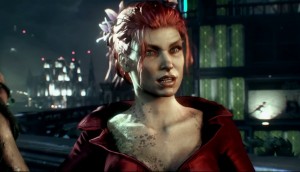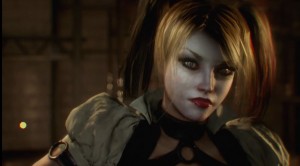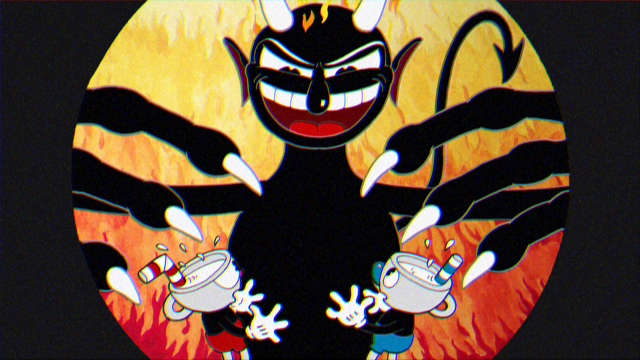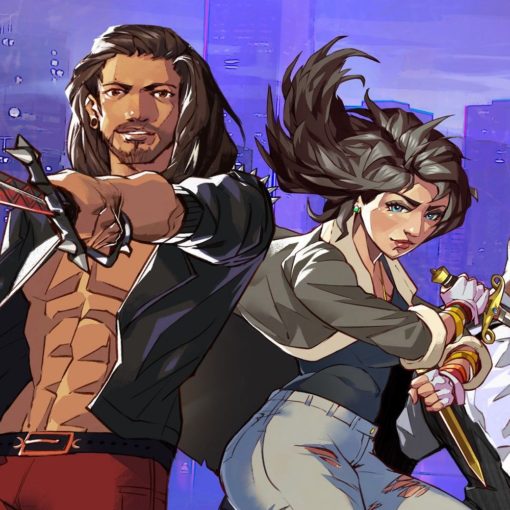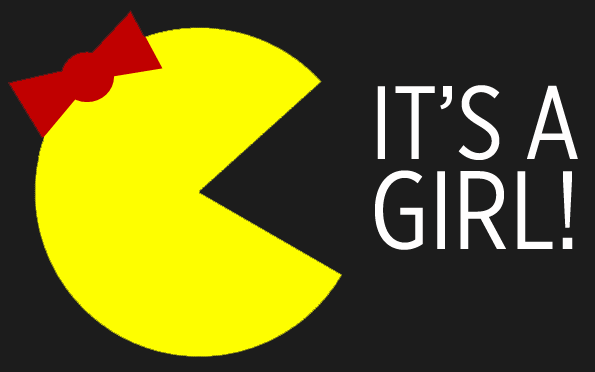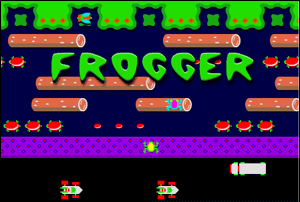The Batman franchise (Warner Bros.) has been frequently questioned on its representation of female characters, despite featuring some of comics’ most memorable women. The Batman: Arkham series has consistently featured some problematic representations of its female characters and other bits of sexist content throughout the four games. Batman: Arkham City was notorious as having featured the worst of it, with another questionable outfit for and performance from Harley Quinn’s character that were both arguably more sexualized (and objectified by the Joker’s rape jokes) than they were in the first game, the tendency for the camera to linger on the female characters’ behinds in a distinct style meant to cater to the male gaze, and, as Kotaku pointed out, the uncomfortable frequency in which NPCs used the word “bitch” when referring to the female characters of the game. This berating and subversion of women is near constant and omnipresent, almost as if it was built into the culture of the game. While it doesn’t manifest in the exact same way in the Batman: Arkham series’ fourth installation as it did in its predecessor, it’s disappointing to see this sort of ingrained sexism rear its head in Batman: Arkham Knight in a way that continues to undermine the female characters’ agency and power.
Warning: some spoilers for Batman: Arkham Knight follow.
You see, in addition to the rather lengthy list of narrative and technical problems negatively impacting players’ gameplay, Batman: Arkham Knight has a problem of making damsels out of most of its female characters in order to progress the plot and paint Batman as even more of a valiant male hero. Furthermore, when not being damseled, their presence in the game is likely to revolve around fulfilling a male character’s interests. Amongst its array of gritty men, the game has a cast of four women: Catwoman, Barbara/Batgirl/Oracle, Poison Ivy, and Harley Quinn. Two of them – Catwoman in the main storyline and Harley Quinn in a DLC addition – are playable. These four are all legendary characters in the franchise and for many, including myself, some of their favorite characters in the franchise. Be they hero or villain, these women are strong and interesting characters in their own regards. Despite this fact, the way the game uses and portrays these four female characters almost completely nullifies any positive representation or experience the ability to play as two different playable women might have offered.
In Batman: Arkham Knight, all but Harley Quinn are damsels who Batman has to rescue at least once throughout the game. Stripped of their power as superheroes or supervillains who have proven in previous iterations of the franchise that they are more than capable of rescuing and protecting themselves, they inevitably find themselves having to be saved by Batman as part of an in-game objective. Any agency they might have had is stripped away and instead given to the male hero, Batman, for the purpose of bolstering his character and the male fantasy he represents.
This situation would have been harmful enough if only one of these female characters had been made a damsel in need of rescuing by the game’s main male protagonist. It would have been problematic, but could have possibly been redeemed if the game had featured empowering and diverse narratives for the female characters. But with a majority of the game’s women being little more than damsels who exist to move the plot along and highlight Batman’s narrative, the women are denied the opportunity to grow as characters or have their own devoted character arcs. It becomes apparent that their inclusion in the game was less to highlight how their stories play into and create the larger Arkham narrative and more to function as tools to move Batman’s story along.
The contexts in which these women are made damsels is also important in understanding just why it’s such a serious issue in the game. Poison Ivy is “rescued” from imprisonment by Batman so he can use her plant-based abilities to save Gotham. She does just that, but dies in the process. Yes, she does have a moment of heroism, but it’s directed by Batman. Then at the end, once she’s filled her “purpose” not only for Batman but narratively as well, she’s killed off. One of the closing lines from that scene points out another issue with Poison Ivy’s role in the story, Alfred states “Sir, the gas cloud is dissipating! You did it. You and Poison Ivy, I mean.” Despite the fact that Poison Ivy’s contributions were directly responsible for saving Gotham – significantly more so than Batman’s – her actions are only an afterthought, taking a backseat to Batman’s spotlight.
By far the most problematic, however, is a scene that was based off Alan Moore’s Batman: The Killing Joke, a comic that has long been criticized for featuring the kidnapping and physical, mental, and implied sexual torture of Barbara as a plot device. Batman: Arkham Knight includes a play off of this scenario in which Barbara is kidnapped and tortured, requiring Batman to come and rescue her. Beyond the shock value – this segment of the game is rumored to be why it was rated M rather than the usual T – there doesn’t seem to be much purpose for this scene. It’s gratuitous violence against a female character without even an internal focus on Barbara herself.
Unfortunately Harley Quinn’s DLC does little to improve the state of women in the game. Everything Harley does within the prequel story she does to serve Scarecrow. Your goal in the Story Pack is to rescue Poison Ivy from a neighboring city’s prison so Scarecrow can make use of her abilities in his overarching evil plans, but it struck me as odd given the relationship Harley and Ivy have had across multiple Batman mediums that Harley would only rescue her at Scarecrow’s command. Even the interaction between them is hollow and devoid of the unique charm of their relationship. Despite never technically being damseled and being the main, playable character in her own Story Pack, the time we get with Harley is not time devoted to exploring her character but rather time where she’s denigrated to being a male character’s puppet.
Even with all of its technical issues, Batman: Arkham Knight‘s most grievous flaw is the way its female characters are used as pawns to be damseled, used, and discarded. Let’s hope that the conclusion of Rocksteady’s Arkham series also brings the conclusion of the mistreatment and mishandling of Batman‘s array of female characters.

